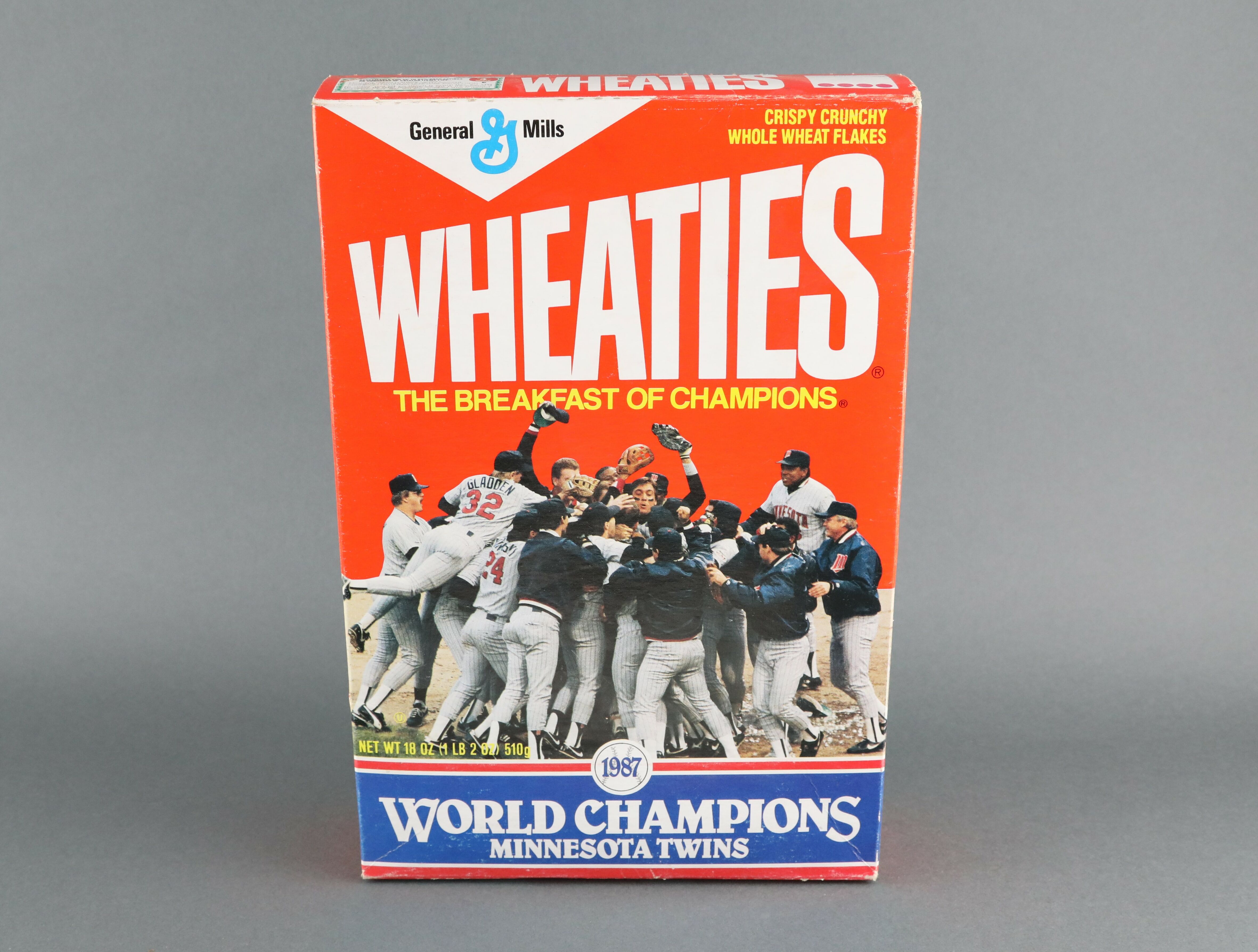December 27, 2018

Image from HMM Collections
In 1987 the Minnesota Twins must have been eating their Wheaties. It is the breakfast of champions after all. That year the Twins won their first World Series, which is why they were featured on the front of the Wheaties box. This also marked the first time an entire team of athletes was featured on the iconic orange package. Wheaties boxes have featured legendary American athletes for several decades. The first athlete depicted was baseball player Lou Gehrig in 1934. Many more athletes have made an appearance over the years, none more than Michael Jordan who graced the front of the box a record 18 times. However, the history of Wheaties is more than sponsorship deals with our favorite athletes. The Wheaties story is one of innovation and has its roots here in Hennepin County.
Wheaties were invented by accident. In 1921 a clinician in Minneapolis spilled a mixture of boiled bran on a hot stove top which baked it into crunchy flake. This Hennepin County resident presented his creation to the Washburn Crosby Company, which later became General Mills, who perfected the recipe and introduced it to the public in 1924. Originally known as “Washburn’s Gold Medal Whole Wheat Flakes”, the cereal was soon marketed as “Wheaties”, the winning entry of a companywide naming contest.
Unfortunately, by 1929 sales of the cereal were so low the product was almost discontinued. However, a shrewd advertising manager realized that most Wheaties sales were in regions where customers could listen to the Wheaties Quartet. The Wheaties Quartet singers had been introduced to the Minneapolis radio audience in 1926, marking the first time a singing advertisement was used to promote a product. This jingle was called “Have You Tried Wheaties?” and helped to boost sales within the listening area. When the company decided to take the radio advertisement to a national audience, sales of Wheaties skyrocketed across the country. This secured the brand’s rightful place in the cereal aisle at the supermarket where it can still be found today. The orange box has become common at the American breakfast table and is beloved by many whether they are sports fans or not.
Written by Alyssa Thiede
This publication was made possible in part by the people of Minnesota through a grant funded by an appropriation to the Minnesota Historical Society from the Minnesota Arts and Cultural Heritage Fund. Any views, findings, opinions, conclusions or recommendations expressed in this publication are those of the authors and do not necessarily represent those of the State of Minnesota, the Minnesota Historical Society, or the Minnesota Historic Resources Advisory Committee.

